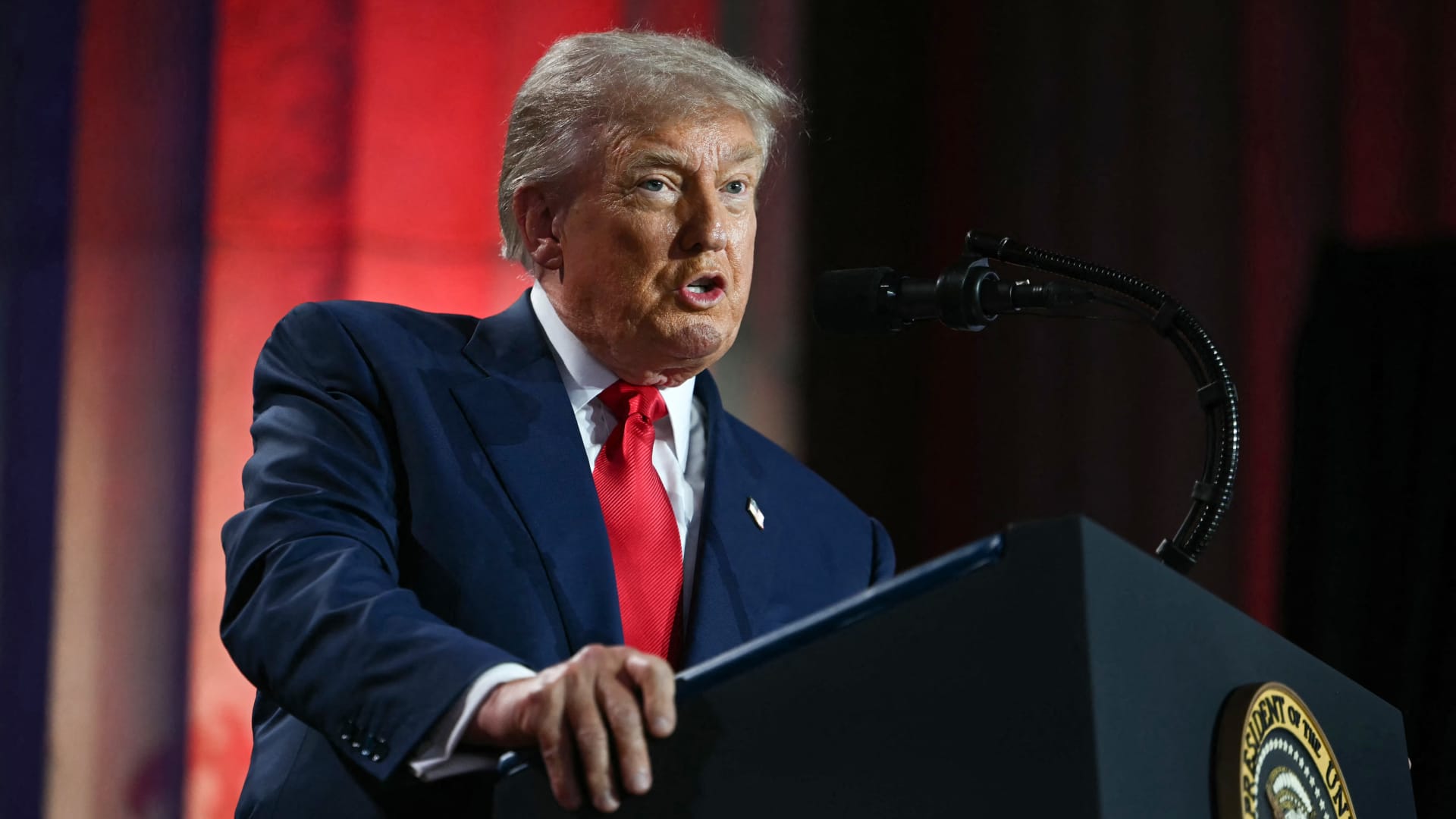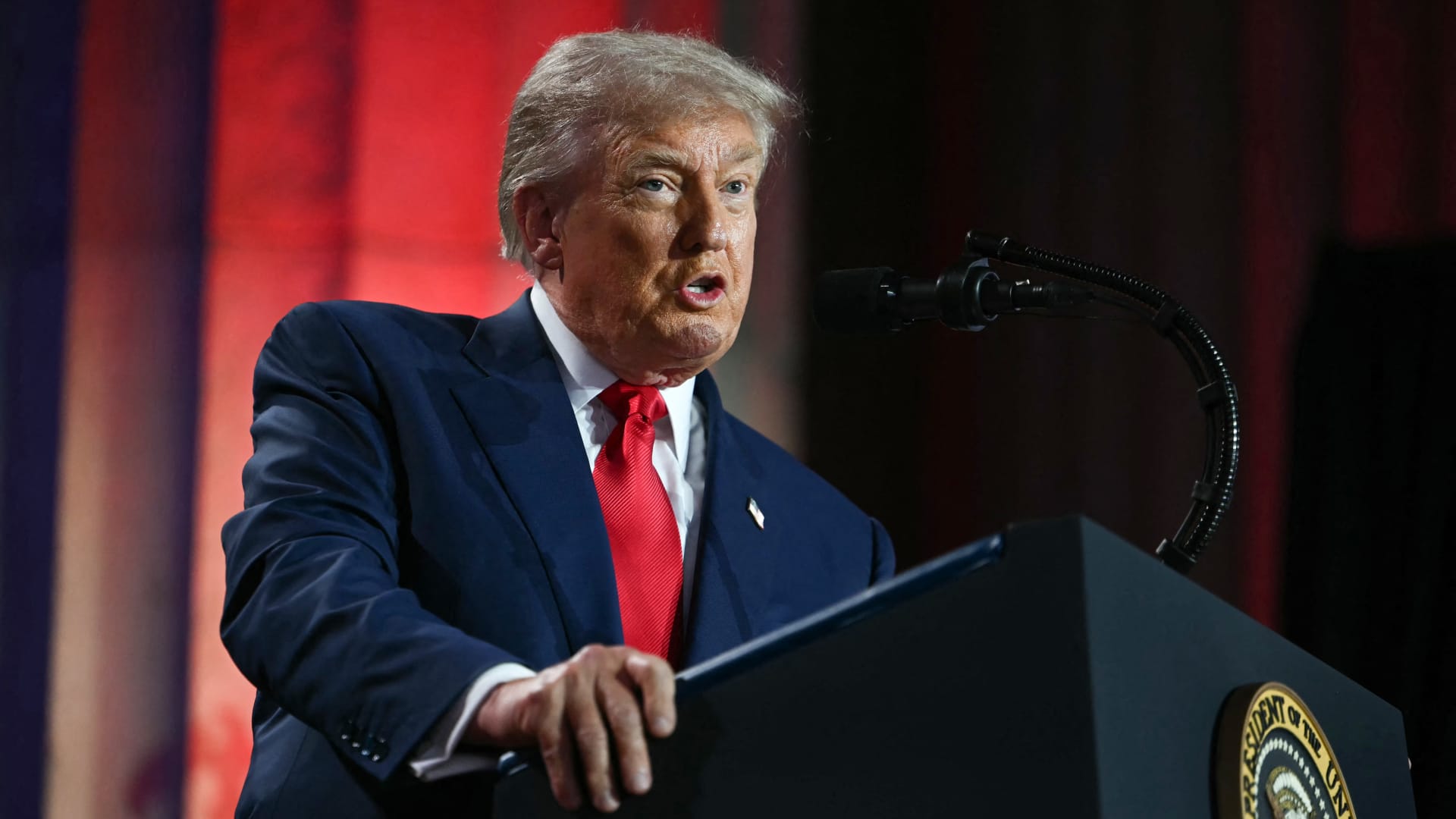Europe’s Strategic Maneuvering in the Face of a No-Deal Scenario with Trump
The transatlantic relationship, once a bedrock of global stability, now teeters on the edge of uncertainty. The specter of a no-deal scenario with the Trump administration looms large, forcing Europe to navigate a complex web of economic, political, and strategic challenges. This report explores the intricate strategies Europe is deploying to safeguard its interests, mitigate risks, and maintain its global standing.
The Looming Threat: Trump’s Unpredictable Trade Tactics
Donald Trump’s approach to international trade has been marked by a willingness to use tariffs as both a bargaining chip and a punitive measure. His administration has repeatedly threatened and, in some cases, imposed tariffs on European goods, citing trade imbalances and national security concerns. These actions have disrupted established trade flows and injected a significant degree of uncertainty into the transatlantic relationship.
The potential for a no-deal scenario arises from several factors. Firstly, the Trump administration’s demands may be perceived as unreasonable or unacceptable by the EU. Secondly, political considerations within both the US and Europe could hinder the negotiation process. And thirdly, a miscalculation or breakdown in communication could lead to a failure to reach an agreement.
Trump’s tactics have included setting deadlines and issuing ultimatums, creating a sense of urgency and pressure. For instance, the threat of 30% tariffs if no agreement was reached by a specific date served as a stark reminder of the potential consequences of inaction. These tactics, while characteristic of Trump’s negotiating style, have been met with a mix of defiance and pragmatism from European leaders.
Fortifying Defenses: Europe’s Proactive Measures
Recognizing the inherent unpredictability of the situation, the European Union has been proactively preparing for the possibility of a no-deal outcome. This involves a multi-faceted approach that encompasses both defensive and offensive measures, designed to mitigate the potential damage to the European economy and to deter further escalation.
Retaliatory Tariffs: A Calculated Response
One of the primary tools at the EU’s disposal is the imposition of retaliatory tariffs on US goods. This strategy is designed to inflict economic pain on the US, creating leverage for future negotiations and demonstrating the EU’s resolve to defend its interests.
The selection of goods targeted for retaliatory tariffs is a carefully considered process. The EU aims to target products that will have a significant impact on the US economy while minimizing the harm to European consumers and businesses. Aircraft and alcoholic beverages have often been mentioned as potential targets, reflecting their economic importance to the US and their availability from alternative sources.
The implementation of retaliatory tariffs is not without its risks. It could trigger a tit-for-tat escalation, leading to a full-blown trade war that would harm both sides. Therefore, the EU is likely to adopt a calibrated approach, starting with a relatively modest level of tariffs and increasing them gradually if necessary.
Diversifying Trade Partnerships: Reducing Dependence
In addition to retaliatory tariffs, the EU is also exploring ways to diversify its trade relationships, reducing its dependence on the US market. This involves actively pursuing trade agreements with other countries and regions around the world.
By expanding its network of trade partners, the EU can lessen the impact of any potential trade disruptions with the US. It can also create new opportunities for European businesses and promote economic growth. For example, the EU has been actively negotiating trade agreements with Japan, Mercosur, and Australia, aiming to strengthen its economic ties with these regions.
Strengthening Internal Cohesion: A United Front
The success of the EU’s response to a no-deal scenario hinges on its ability to maintain internal cohesion. It is crucial for member states to present a united front in negotiations with the US and to avoid undermining the EU’s position through unilateral actions.
The European Commission plays a central role in coordinating the EU’s response and ensuring that all member states are on the same page. This involves providing clear guidance, facilitating information sharing, and enforcing common rules. For instance, the Commission has been working closely with member states to align their positions on key trade issues and to ensure a coordinated response to US tariffs.
Geopolitical Ramifications: Reshaping Europe’s Global Role
The trade dispute with the US has broader geopolitical implications for Europe. It has raised questions about the future of the transatlantic relationship and the US commitment to European security.
Investing in European Defense: Enhancing Strategic Autonomy
In light of the perceived decline in US reliability, there is growing support for strengthening European defense capabilities. This involves increasing defense spending, improving military coordination, and developing independent defense technologies.
By investing in its own defense, Europe can enhance its strategic autonomy and reduce its dependence on the US for security. This would not only strengthen Europe’s position in the world but also provide it with greater leverage in its dealings with the US. For example, the EU has been exploring the possibility of developing its own defense industrial base, reducing its reliance on US military equipment and technology.
Exploring Alternative Alliances: A Shifting Global Landscape
The trade dispute with the US has also prompted Europe to explore alternative alliances with other countries and regions. This includes strengthening ties with China, Russia, and other emerging powers.
While the transatlantic relationship remains important, Europe recognizes the need to diversify its partnerships and to adapt to a changing global landscape. This involves engaging with countries that share its values and interests, regardless of their relationship with the US. For instance, the EU has been actively engaging with China on issues such as climate change and trade, aiming to strengthen its economic and political ties with the world’s second-largest economy.
The Path to Resolution: Navigating the Negotiation Maze
Despite the preparations for a no-deal scenario, the EU remains committed to seeking a negotiated resolution to the trade dispute with the US. This involves engaging in dialogue with the Trump administration, identifying areas of common ground, and exploring potential compromises.
The EU is likely to emphasize the importance of maintaining a rules-based international trading system and to highlight the mutual benefits of transatlantic trade. It may also offer concessions on certain issues in exchange for a commitment from the US to refrain from imposing further tariffs. For example, the EU could offer to increase its purchases of US goods in exchange for the US withdrawing its tariffs on European products.
However, the EU is also aware that negotiations with the Trump administration can be unpredictable and that a successful outcome is not guaranteed. Therefore, it will continue to prepare for the possibility of a no-deal scenario while simultaneously pursuing a negotiated solution.
Conclusion: Charting a Course Through Uncertainty
Europe’s response to a no-deal scenario with Trump is a complex and multifaceted undertaking. It involves a delicate balance of deterrence and diplomacy, of protecting its economic interests while seeking to avoid a full-blown trade war. The path ahead is fraught with challenges, but Europe’s commitment to multilateralism, its economic strength, and its growing strategic autonomy provide it with the tools to navigate this uncertain landscape and to shape its own future.
By fortifying its defenses, diversifying its trade partnerships, and strengthening its internal cohesion, Europe can mitigate the risks posed by a no-deal scenario. At the same time, by investing in its defense capabilities and exploring alternative alliances, it can enhance its strategic autonomy and adapt to a changing global landscape. Ultimately, Europe’s ability to navigate this complex and uncertain environment will be a testament to its resilience, adaptability, and commitment to its values and interests.












